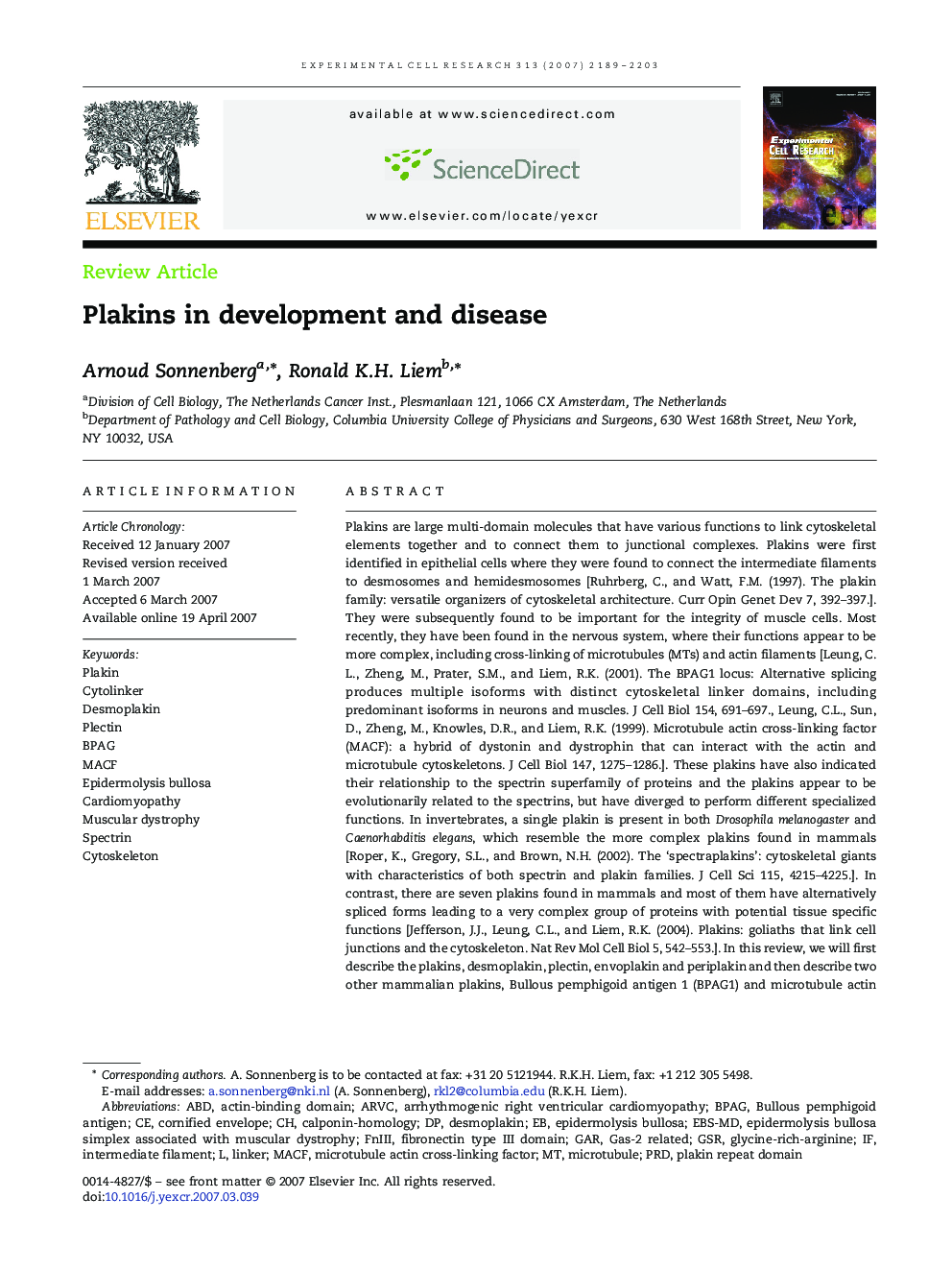| کد مقاله | کد نشریه | سال انتشار | مقاله انگلیسی | نسخه تمام متن |
|---|---|---|---|---|
| 2133078 | 1086736 | 2007 | 15 صفحه PDF | دانلود رایگان |

Plakins are large multi-domain molecules that have various functions to link cytoskeletal elements together and to connect them to junctional complexes. Plakins were first identified in epithelial cells where they were found to connect the intermediate filaments to desmosomes and hemidesmosomes [Ruhrberg, C., and Watt, F.M. (1997). The plakin family: versatile organizers of cytoskeletal architecture. Curr Opin Genet Dev 7, 392–397.]. They were subsequently found to be important for the integrity of muscle cells. Most recently, they have been found in the nervous system, where their functions appear to be more complex, including cross-linking of microtubules (MTs) and actin filaments [Leung, C.L., Zheng, M., Prater, S.M., and Liem, R.K. (2001). The BPAG1 locus: Alternative splicing produces multiple isoforms with distinct cytoskeletal linker domains, including predominant isoforms in neurons and muscles. J Cell Biol 154, 691–697., Leung, C.L., Sun, D., Zheng, M., Knowles, D.R., and Liem, R.K. (1999). Microtubule actin cross-linking factor (MACF): a hybrid of dystonin and dystrophin that can interact with the actin and microtubule cytoskeletons. J Cell Biol 147, 1275–1286.]. These plakins have also indicated their relationship to the spectrin superfamily of proteins and the plakins appear to be evolutionarily related to the spectrins, but have diverged to perform different specialized functions. In invertebrates, a single plakin is present in both Drosophila melanogaster and Caenorhabditis elegans, which resemble the more complex plakins found in mammals [Roper, K., Gregory, S.L., and Brown, N.H. (2002). The ‘spectraplakins’: cytoskeletal giants with characteristics of both spectrin and plakin families. J Cell Sci 115, 4215–4225.]. In contrast, there are seven plakins found in mammals and most of them have alternatively spliced forms leading to a very complex group of proteins with potential tissue specific functions [Jefferson, J.J., Leung, C.L., and Liem, R.K. (2004). Plakins: goliaths that link cell junctions and the cytoskeleton. Nat Rev Mol Cell Biol 5, 542–553.]. In this review, we will first describe the plakins, desmoplakin, plectin, envoplakin and periplakin and then describe two other mammalian plakins, Bullous pemphigoid antigen 1 (BPAG1) and microtubule actin cross-linking factor 1 (MACF1), that are expressed in multiple isoforms in different tissues. We will also describe the relationship of these two proteins to the invertebrate plakins, shortstop (shot) in Drosophila and VAB-10 in C. elegans. Finally, we will describe an unusual mammalian plakin, called epiplakin.
Journal: Experimental Cell Research - Volume 313, Issue 10, 10 June 2007, Pages 2189–2203